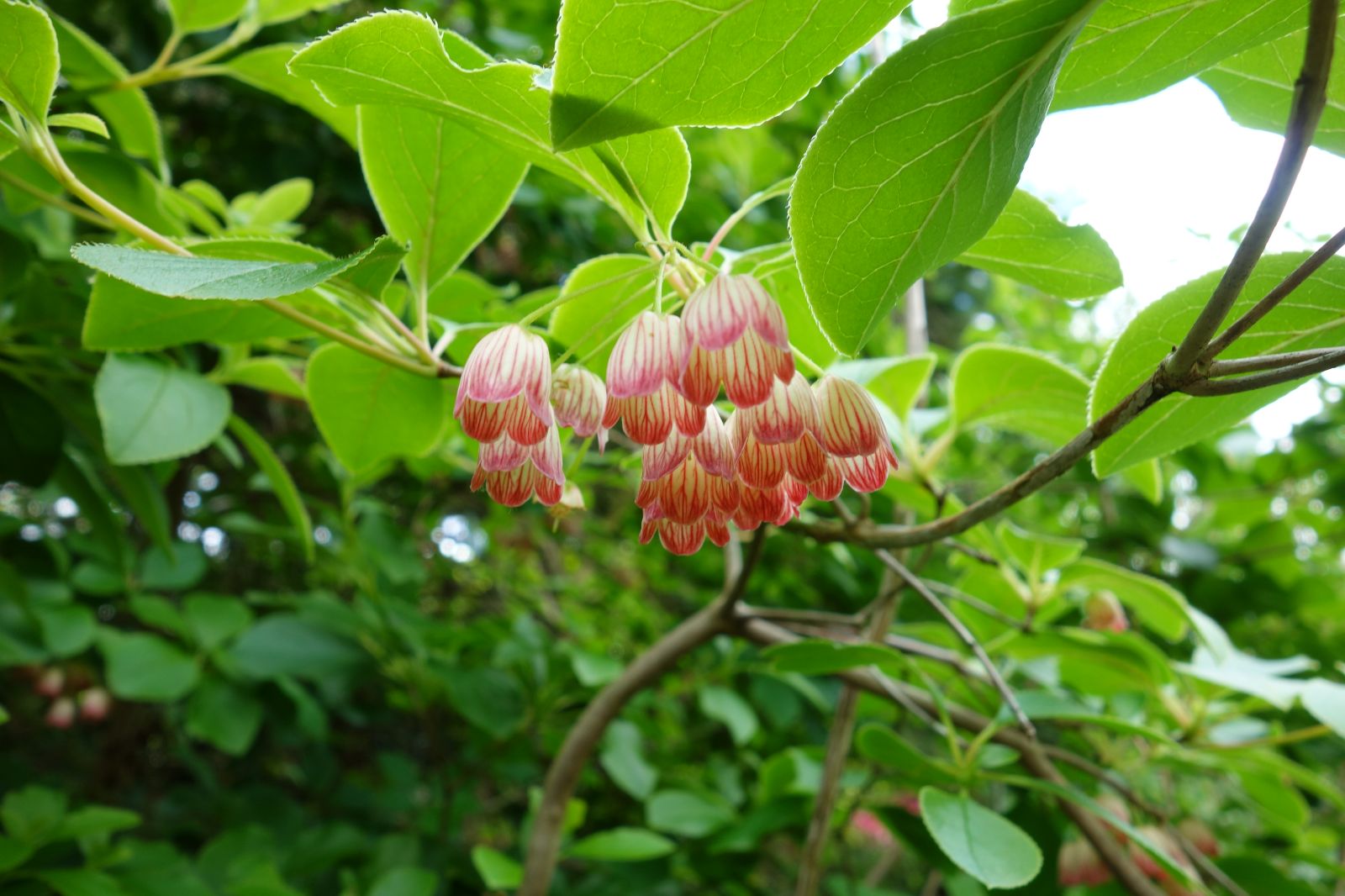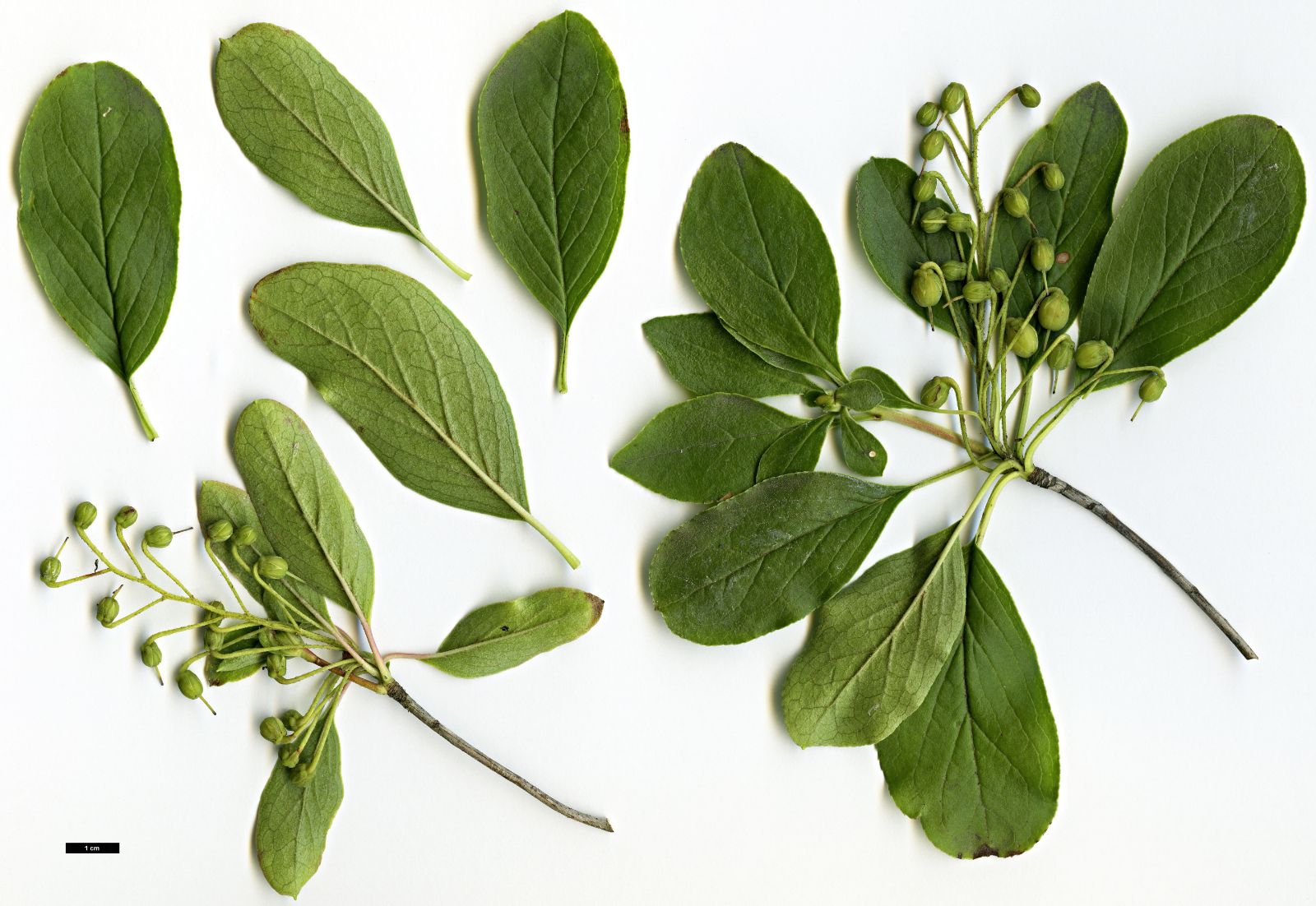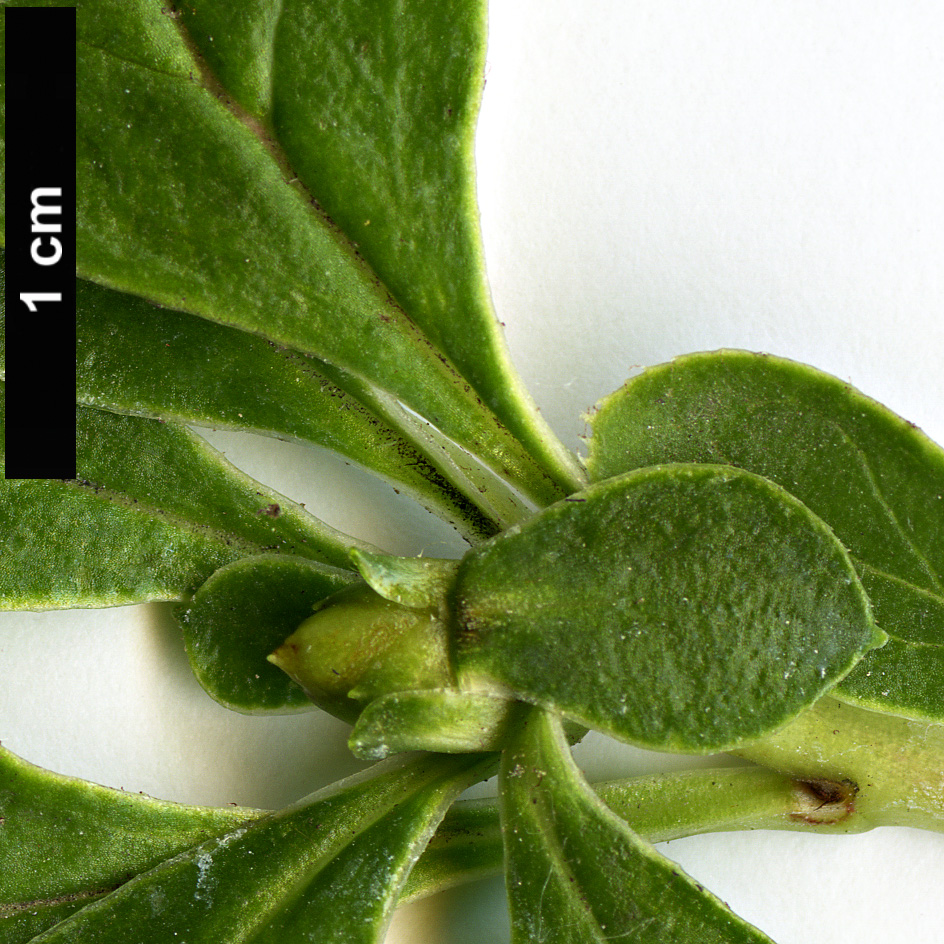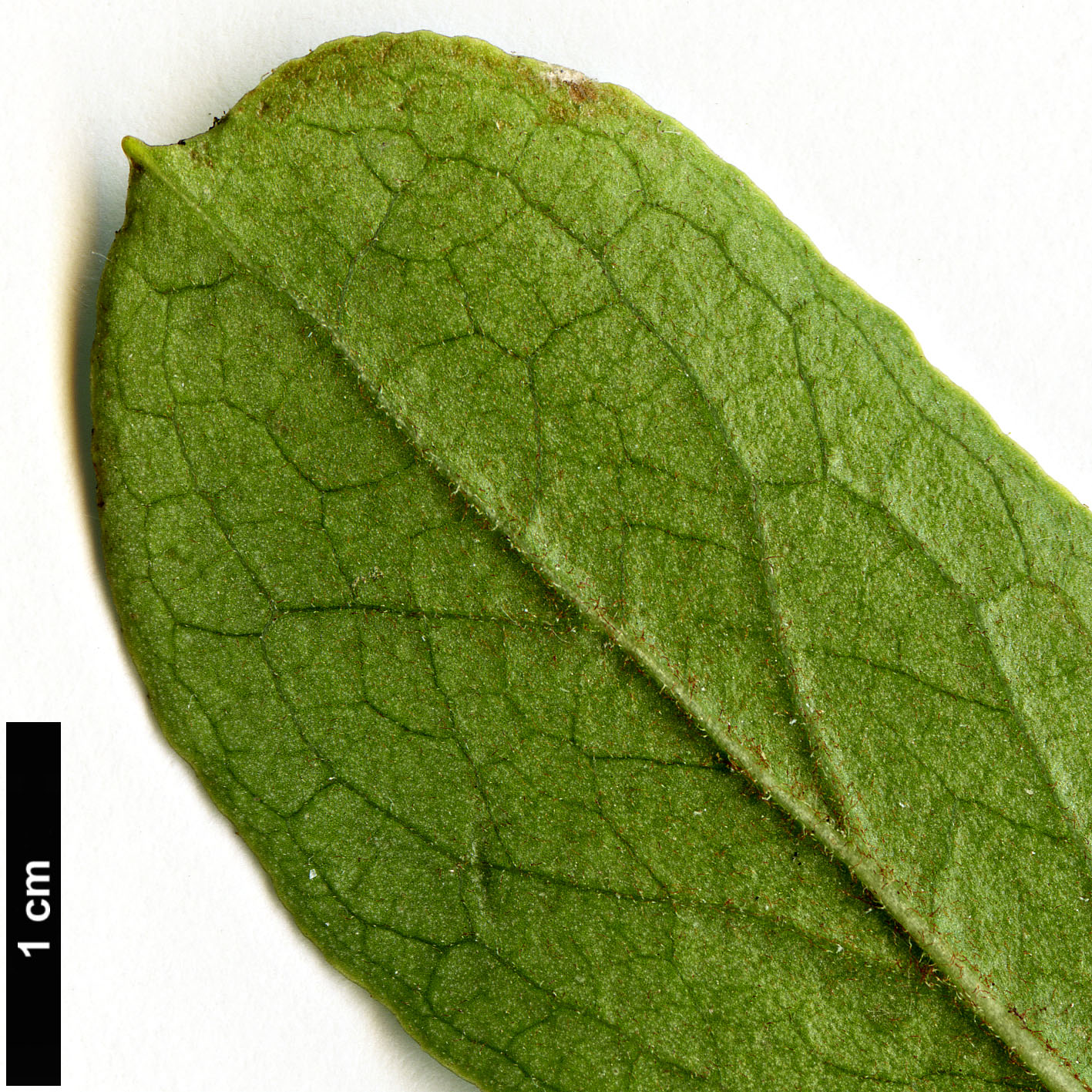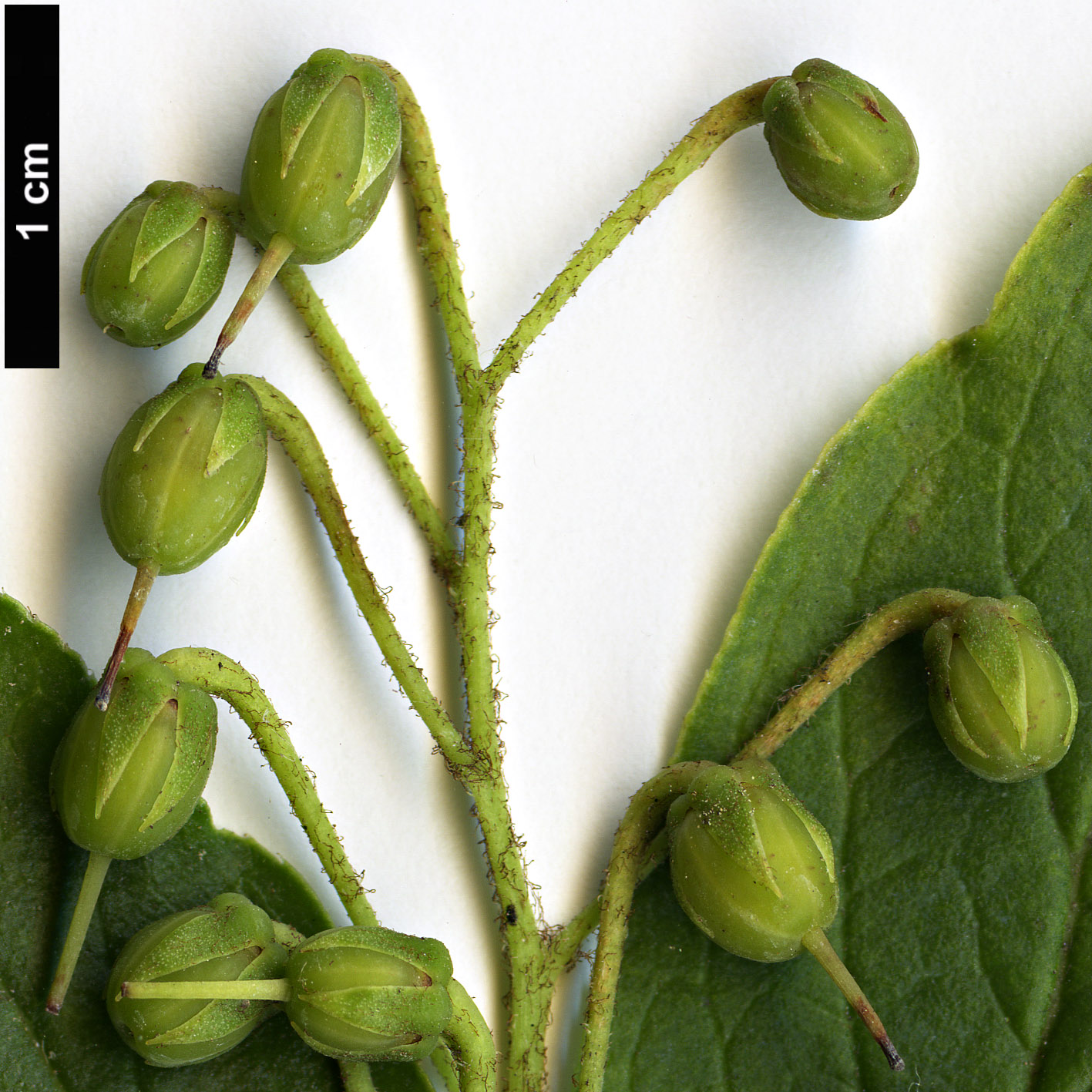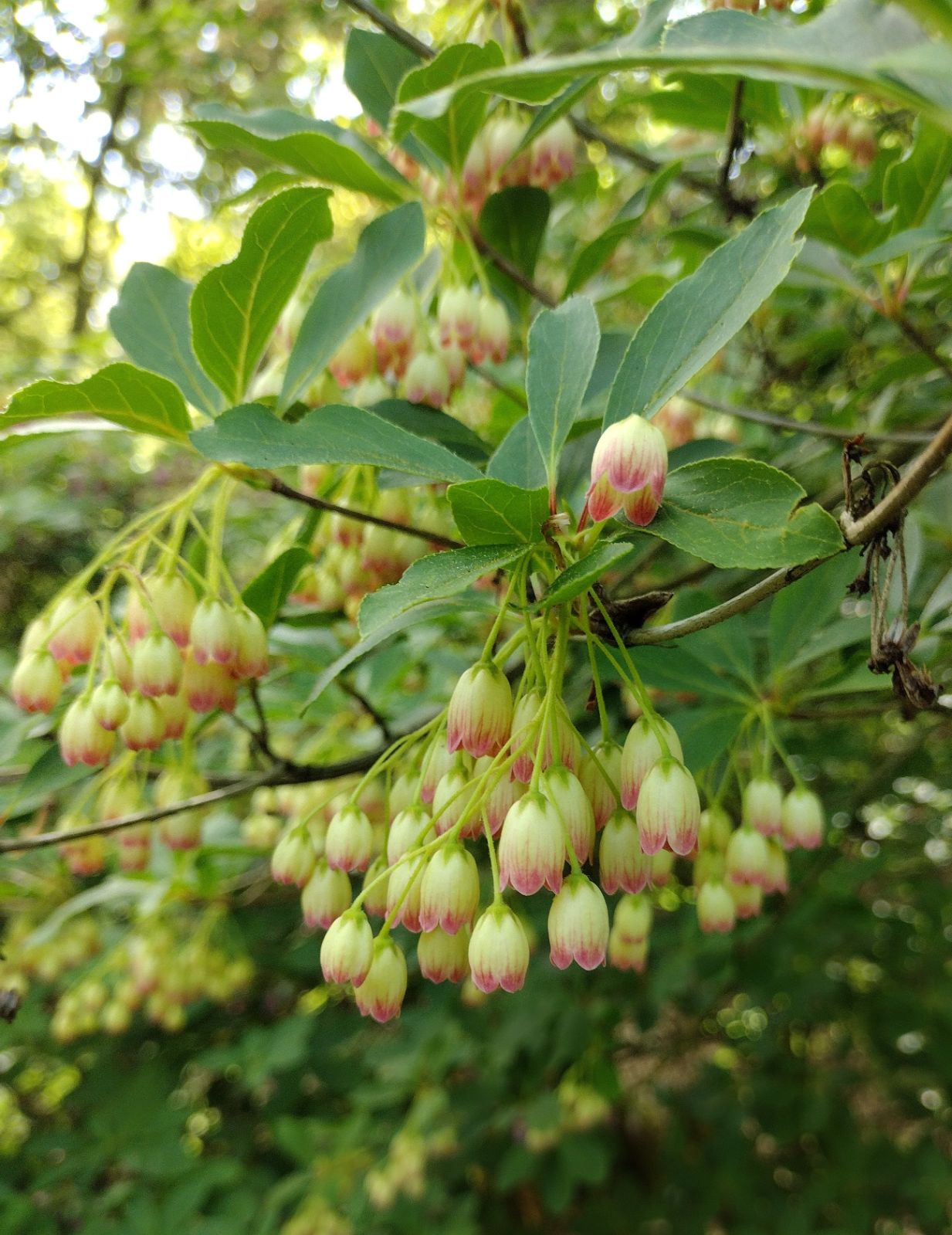Enkianthus sikokianus
Sponsor
Kindly sponsored by
Alasdair and Panny Laing
Credits
Tom Clark (2023)
Recommended citation
Clark, T. (2023), 'Enkianthus sikokianus' from the website Trees and Shrubs Online (treesandshrubsonline.
Genus
- Enkianthus
- Section Meisteria
Common Names
- Kainan-sarasa-dōdan
Synonyms
- Enkianthus campanulatus var. sikokianus Palib.
- Meisteria sikokiana (Palib.) Nakai
- Tritomodon sikokianus (Palib.) Honda
Deciduous shrub 1.5–5 m tall. Branchlets terete, glabrous. Leaves remotely alternate on long shoots, or generally crowded near apex on short shoots, thich membranaceous; petiole 3–10 mm long, sparsely crisped pilose; blades elliptic-ovate or elliptic, 3–7 × 1.5–3.5 cm, apex short acute and terminating into a gland, base gradually narrowed, attenuate into petiole, with many minute acute hair-like apiculate teeth, upper surface glabrous, lower surface with brown crisped pilose hairs along nerves. Inflorescences slender racemose, 4–9 cm long, pendulous, with 8–20 flowers, bracts incospicuous. Peducle and pedicels crisped pubescent. Pedicel 0.5–1(–1.5) cm long, straight, pendulous at flowering, upcurved at fruiting. Calyx broadly campanulate, deeply 5-lobed; lobes narrowly ovate to lanceolate, acute, 2–3 mm long, pubescent outside and on margin. Corolla campanulate, red, tinged with yellowish-green, 7–8 mm long, shortpuberulent on both sides, 5-lobed; lobes widely orbiculate, c. 3 × 3–4 mm, entire. Stamens 10; filaments and anthers short villous; anthers with 2 awns on dorsal side at apex. Capsule narrowly ellipsoid, erect, 5-ridged, 5–8 × 3–4 mm, loculicidally 5-valved. Seeds narrowly oblong, 3–4 mm long, irregularly winged. Flowering mid-May to mid-June. (Iwatsuki 1993).
Distribution Japan southern Honshu (Aichi, Mie, Wakayama Prefectures), Shikoku (Pacific Ocean side)
Habitat Open, rocky mountain slopes; 200–600 m asl.
USDA Hardiness Zone 5-7
RHS Hardiness Rating H5
Conservation status Not evaluated (NE)
At its best, when it can carry long racemes of up to 20 rich rose-red flowers, this splendid shrub stands apart from E. campanulatus, but according to some descriptions the racemes can carry as few as 8 flowers. This variability makes identification based on this character tenuous; the deep divisions dividing the corolla lobes are more useful (R. White pers. comm. 2023). E. sikokianus has a more southerly range in Japan, restricted to southeastern Honshu in the Kansai region and on the adjacent island of Shikoku, the namesake for this taxon’s specific epithet. It is closely related to E. campanulatus and, in fact, there is considerable overlap in various characters that can lead to difficulty in distinguishing certain forms of one species from the other. At one time relegated to varietal status under E. campanulatus, it was elevated to species rank by Ohwi in his 1953 Flora of Japan. Interestingly, the 1965 English translation of Ohwi’s monumental tome edited by Meyer and Walker gives preference to E. campanulatus var. sikokianus (Ohwi 1965) but here we follow Plants of the World Online and treat it at species rank. This taxon is often seen in nursery listings – and even in the inventory of some botanic gardens – dubiously listed as the cultivar ‘Sikokianus’. It is possible that a particularly fine clone of E. campanulatus was propagated, promoted and offered under this erroneously used name though its continued use should be discouraged.
Given that this species is so closely allied with E. campanulatus it is quite likely that there are specimens masquerading as E. campanulatus, and it is quite clear that there are specimens in cultivation labeled E. sikokianus that, upon closer inspection, are E. campanulatus! Although reasonably common in cultivation (at least in name) there are plants of well-documented wild origin in various gardens and arboreta. The Sonoma Botanical Garden (formerly Quarryhill Botanical Garden) near San Francisco has accessions from Kyoto University and two accessions from a 2007 collecting trip in partnership with colleagues from Polly Hill Arboretum (Massachusetts, USA), Morris Arboretum (Pennsylvania, USA), RBG Edinburgh (UK), and Howick Hall Gardens & Arboretum (UK) under collection numbers BCJMMT 315 and 320 (Quarryhill Botanical Garden 2022). A 2018 expedition involving Polly Hill Arboretum, Morris Arboretum and Arnold Arboretum (Massachusetts, USA) in partnership with Japanese colleagues returned with several collections of Enkianthus including E. sikokianus under collection number PCC18-HON-048. Expedition notes indicate that this collection was made in “Mixed broad-leaved evergreen, deciduous, and coniferous forest; in a north-running stream valley”. It is offered commercially on a limited basis in both Europe and North America.

